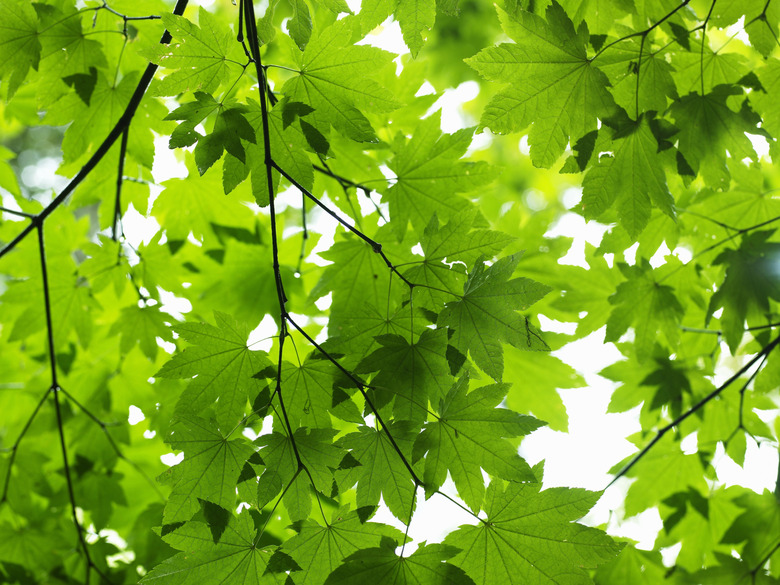Should I Cover My 4-Foot Tall Japanese Maple If A Freeze Comes?
With origins in eastern Asia, two species of slow-growing deciduous trees are commonly called Japanese maples — Acer palmatum and Acer japonicum. These temperate plants need an annual winter dormancy with cold temperatures to grow well. Japanese maples are grown in U.S. Department of Agriculture plant hardiness zones 5 through 8, with more cold tolerance noted in selections of Acer japonicum. A freeze will not harm maple trees when dormant, but during active growth it leads to leaf kill and branch dieback.
Cold Tolerances
Cold Tolerances
When Japanese maples are dormant — when no leaves are present — from fall to spring, they tolerate considerable cold without detriment. They not only survive frosts and freezes, prolonged subfreezing temperatures aren't harmful as long as sap doesn't flow. Acer palmatum survives temperatures down to minus 10 degrees Fahrenheit — USDA zone 6 — while Acer japonicum tolerates temperatures down to minus 20 degrees — USDA zone 5. Do not plant Japanese maples in subtropical areas where average winter lows do not regularly drop below 25 degrees.
Spring Freezes
Spring Freezes
At the end of the winter dormancy when temperatures are increasingly warmer, Japanese maples begin to flow sap through the leafless branches. Depending on the weather, the dormant buds may swell and reveal tiny new leaves as early as March in the southern United States. Exposed tender new growth is susceptible to frost and freeze damage in spring. Therefore, cover a small Japanese maple overnight to shield it from excess cold. An old bed sheet or frost cloth can prevent brief subfreezing temperatures from killing the new foliage and stressing the tree. If the temperatures are low enough and endure for long enough, even a fabric covering can't prevent some leaf loss or twig damage.
Fall Freezes
Fall Freezes
Do not worry about covering a Japanese maple in autumn to protect it from frosts and freezes. As day lengths shorten and temperatures naturally cool as autumn deepens, the maple tree is shutting down and preparing to drop foliage and go dormant. A freeze this time of year is not harmful as sap is vacating the branches. However, if the Japanese maple is displaying good fall foliage color, placing a fabric sheet over the plant can prevent the freeze from hastening leaf drop. This can keep more colorful foliage on the tree in autumn a few days or weeks longer for visual enjoyment.
Winter Care
Winter Care
Once frosts and freezes naturally occur in fall and more foliage drops from the branches, do not protect the Japanese maple from freezes the rest of winter. Leaving an opaque, tight-fibered fabric cloth over the dormant maple can disrupt natural biorhythms triggered by exposure to light and cold air. These cues ensure the maple does not sprout leaves during warm spells in winter. Coverings left over a Japanese maple in winter can diminish air circulation and increase threats of fungal diseases. Keep branches exposed so any rain, snow or ice can drip from the plant and not weigh down a covering and cause branch breakage. In cold, windy climates, a light-colored covering may be placed over the tree to prevent drying winds from harming the maple.
References
- Learn2Grow; Hard Freeze in Spring = Hard Times for the Garden; Mark Miller
- Rideau Woodland Ramble; Japanese Maples: Woodland Wonder; Dave Dunn
- "A-Z Encyclopedia of Garden Plants"; Christopher Brickell and H. Marc Cathey, eds.; 2004
